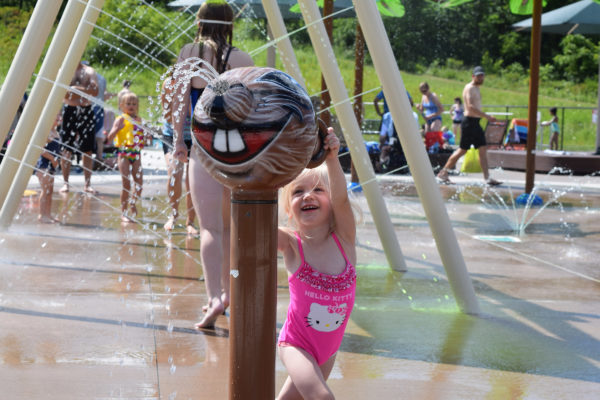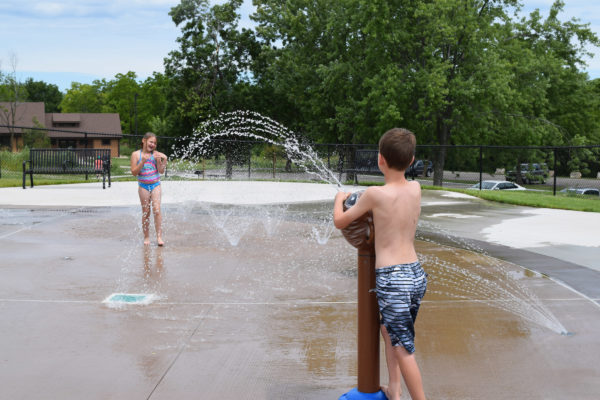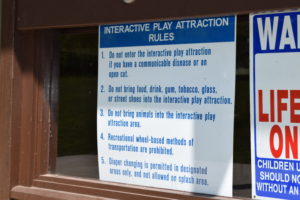Splashpads Are For People, Not Pups

While your furry canine companion most likely would love nothing more than to frolic at the local water play area, it’s important to know that splashpads are no place for pets.
Water play areas, also called aquatic playgrounds, splashpads, or spray parks, have increasingly become a popular, less costly alternative to community swimming pools. Splashpads have skyrocketed in popularity since the mid-2000s. As municipal pools need to be replaced, officials spend a fraction of the cost of replacing the pool and install an interactive water feature with far less required maintenance and upkeep.
However, splashpads are not without their challenges. One growing problem occurs when people bring their pets (namely dogs) to the splash park to cool down. While it’s natural to think dogs would enjoy running through the water, this practice poses both public health and maintenance issues.
A splashpad can be designed with two different mechanical systems: a flow-through system or a recirculation system. A flow-through system operates much like a lawn sprinkler; water is pumped into the splashpad and then drained into a community’s stormwater system. With a recirculation system, after water is sprayed out, it is filtered and disinfected before being redistributed back into the splashpad features.
 Because the water is reused in a recirculating system, it naturally brings more regulations, and one of those is no pets. First, pets shed much more than their human companions, and this causes drains to clog, possibly causing the system to malfunction. When there’s a lot of pet hair caught in the built-in strainers, the pumps have to work harder to circulate the water, and this can burn out the pumps. Although manufacturers of pump systems advise emptying the strainers daily, municipalities may have difficulty keeping up with that kind of maintenance. In reality, strainers are more likely to be cleaned once a week or even once a month.
Because the water is reused in a recirculating system, it naturally brings more regulations, and one of those is no pets. First, pets shed much more than their human companions, and this causes drains to clog, possibly causing the system to malfunction. When there’s a lot of pet hair caught in the built-in strainers, the pumps have to work harder to circulate the water, and this can burn out the pumps. Although manufacturers of pump systems advise emptying the strainers daily, municipalities may have difficulty keeping up with that kind of maintenance. In reality, strainers are more likely to be cleaned once a week or even once a month.
 Second, dogs don’t wear swim diapers like toddlers! According to the Centers for Disease Control and Prevention, in a recirculating system the spray water will rinse any contaminants down into the water holding area to be sprayed again, and it’s possible for the water to become contaminated and make people sick. So using that logic, when a dog poops, the solid erodes as the water passes through it (unlike a pool where it’s easy to spot). The slowly eroding feces contaminate the chemical system, and contaminated water also can get airborne as it sprays through the water features.
Second, dogs don’t wear swim diapers like toddlers! According to the Centers for Disease Control and Prevention, in a recirculating system the spray water will rinse any contaminants down into the water holding area to be sprayed again, and it’s possible for the water to become contaminated and make people sick. So using that logic, when a dog poops, the solid erodes as the water passes through it (unlike a pool where it’s easy to spot). The slowly eroding feces contaminate the chemical system, and contaminated water also can get airborne as it sprays through the water features.
Health code inspectors are starting to crack down on the no pets policy. It’s important to pay attention to posted signs and understand that pets have no place in the splash park. Let them sit on the sideline and watch the kids play; they will most likely have nearly as much fun.
Visit our landscape architecture page for more about the services we offer.

Post a comment: